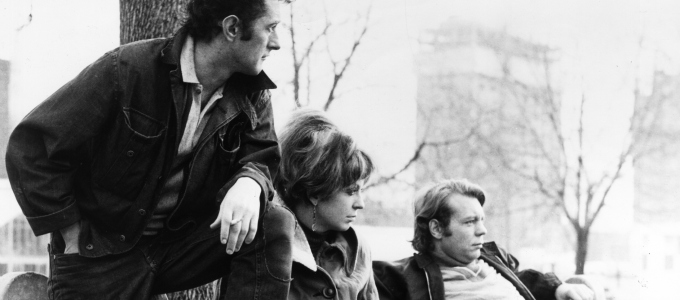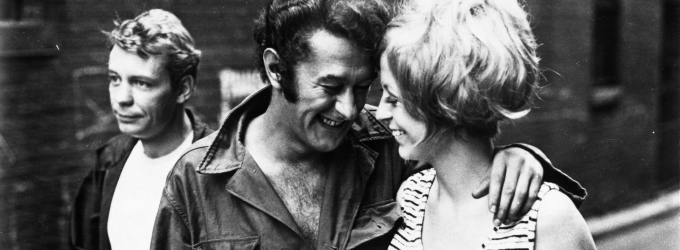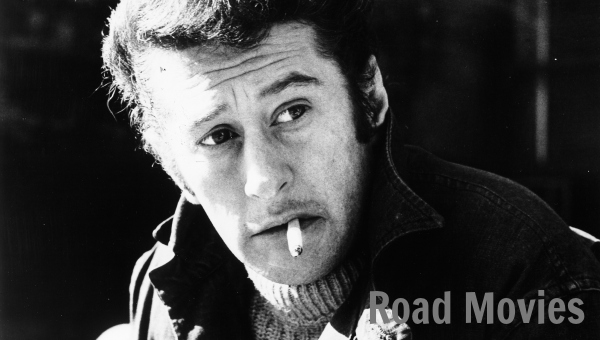 This unsentimental film tells an honest story about the adventures and frustrations of a couple of poor, inexperienced, uneducated young men from rural Nova Scotia who go to Toronto hoping to find a better life. Pete (Doug McGrath) and his pal Joey (Paul Bradley, himself an unemployed Maritimer with no previous acting experience) are two wistful roustabouts with 30 bucks between them and an abused 1960’s Chevy Impala with ‘My Nova Scotia Home’ painted on the side. They pick up and head ‘down the road’ to the Big Smoke, with dreams of a better tomorrow. “Lock up your daughters!” yells Joey as he and Pete pull off the Don Valley Parkway (the main highway leading to city core), and the Toronto is never disguised as anything but what it is.
This unsentimental film tells an honest story about the adventures and frustrations of a couple of poor, inexperienced, uneducated young men from rural Nova Scotia who go to Toronto hoping to find a better life. Pete (Doug McGrath) and his pal Joey (Paul Bradley, himself an unemployed Maritimer with no previous acting experience) are two wistful roustabouts with 30 bucks between them and an abused 1960’s Chevy Impala with ‘My Nova Scotia Home’ painted on the side. They pick up and head ‘down the road’ to the Big Smoke, with dreams of a better tomorrow. “Lock up your daughters!” yells Joey as he and Pete pull off the Don Valley Parkway (the main highway leading to city core), and the Toronto is never disguised as anything but what it is.
GOIN’ DOWN THE ROAD has a documentary authenticity, blending social concerns with artistic sensitivity.
The boys find temporary work in a soft-drink factory, hit on the busty Québecoise secretary (Nicole Morin), drown their troubles in beer and make various futile attempts to improve themselves. The more ambitious Pete tries to land a job in advertising, but soon discovers that without education or skills he is stuck with dead-end jobs. Joey marries Betty (Jayne Eastwood), a lonely woman whom he has made pregnant. When Pete and Joey get laid off, all three of them are forced to move into a seedy, downtown hotel. After a pathetic, botched attempt at robbing a food store at night, the pair – still believing there’s a better life somewhere – takes to the road once again, heading further west.
Released in 1970, director Don Shebib’s first feature was the most influential English-Canadian film of its generation with absolutely pitch-perfect performances by McGrath and Bradley, and is still an impressive piece of realist cinema. It takes as its theme the path west Maritimers have historically taken in Canada. The unsophisticated manual labourer was a common stereotype in 1950s and 1960, as many Atlantic Canadians moved to the cities looking for work. Shebib and co-writer William Fruet took this narrative as inspiration from the East Coast community they encountered in Toronto.
At times grim, with that distinctly Canadian feeling of despair, GOIN’ DOWN THE ROAD has a documentary authenticity, blending social concerns with artistic sensitivity. It also highlights Shebib’s ongoing filmic pre-occupation with the subject of male friendship and male bonding. The film’s working-class protagonists fit nicely into the cycle of buddy/loser road movies released in the early 1970s following the phenomenal success of EASY RIDER, films such as Sidney J. Furie’s LITTLE FAUSS AND BIG HALSY (1970), Monte Hellman’s TWO LANE BACKTOP (1971), Stuart Rosenberg’s POCKET MONEY (1972) and Jerry Shatzberg’s SCARECROW (1973) among others.
… a tiny, perfect gem of a movie, shot on 16 mm with a raw, propulsive charge.
Ace cinematographer Richard Leiterman, a cinéma-vérité pioneer cameraman who had previously filmed Frederick Wiseman’s groundbreaking HIGH SCHOOL and Alan King’s A MARRIED COUPLE, captured the city and its neighbourhoods with his hand-held camera in glorious black and white. Particularly effective are the scenes on Yonge Street at night (then known as Canada’s ‘Main Street’), with its hookers, rock bars, all-night pharmacies and strip joints. The footage is alive and throbbing. Young up-and-coming singer/songwriter Bruce Cockburn composed the score, including two original compositions, “Goin’ down the Road” and “Another Victim of the Rainbow.”
GOIN’ DOWN THE ROAD is a tiny, perfect gem of a movie, shot on 16 mm with a raw, propulsive charge. Its intelligent blend of fiction and documentary realism provides an illuminating insight into the lives of people living on the margins of society. It’s also one of the best movies ever made about the city itself, in all its late-1960s finery, just when it was losing its staid, ‘Toronto-the-Good’ image.
GOIN’ DOWN THE ROAD was awarded best feature film at the 1970 Canadian Film Awards, and Bradley and McGrath shared the best actor prize. It has consistently been named in the top three best Canadian films ever made (the other two being Claude Jutra’s MON ONCLE ANTOINE and Denys Arcand’s JESUS OF MONTREAL) and was designated a Master Work by the Audio-Visual Preservation Trust of Canada in 2000.
httpvh://youtu.be/-xGObvZAN38

